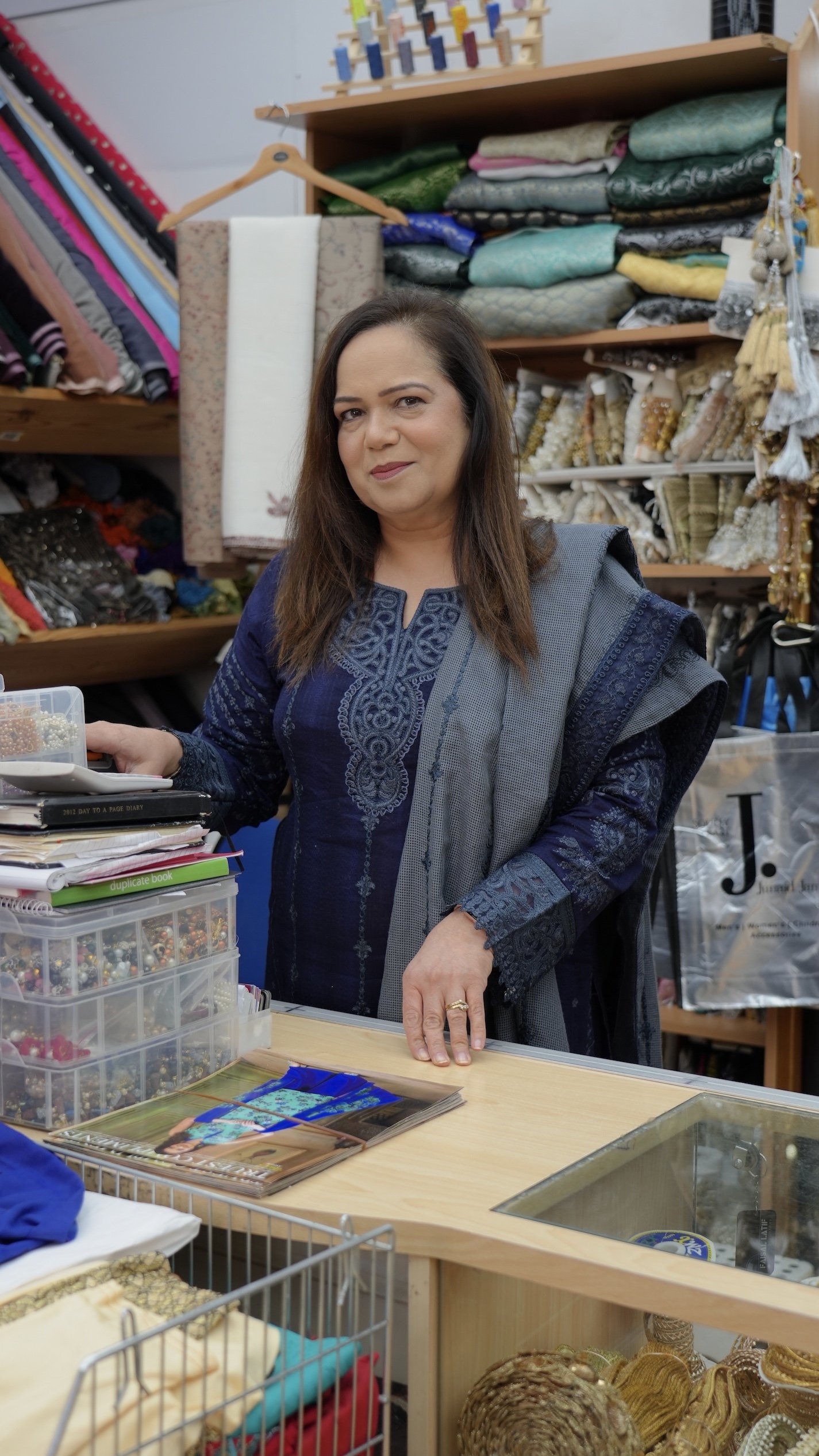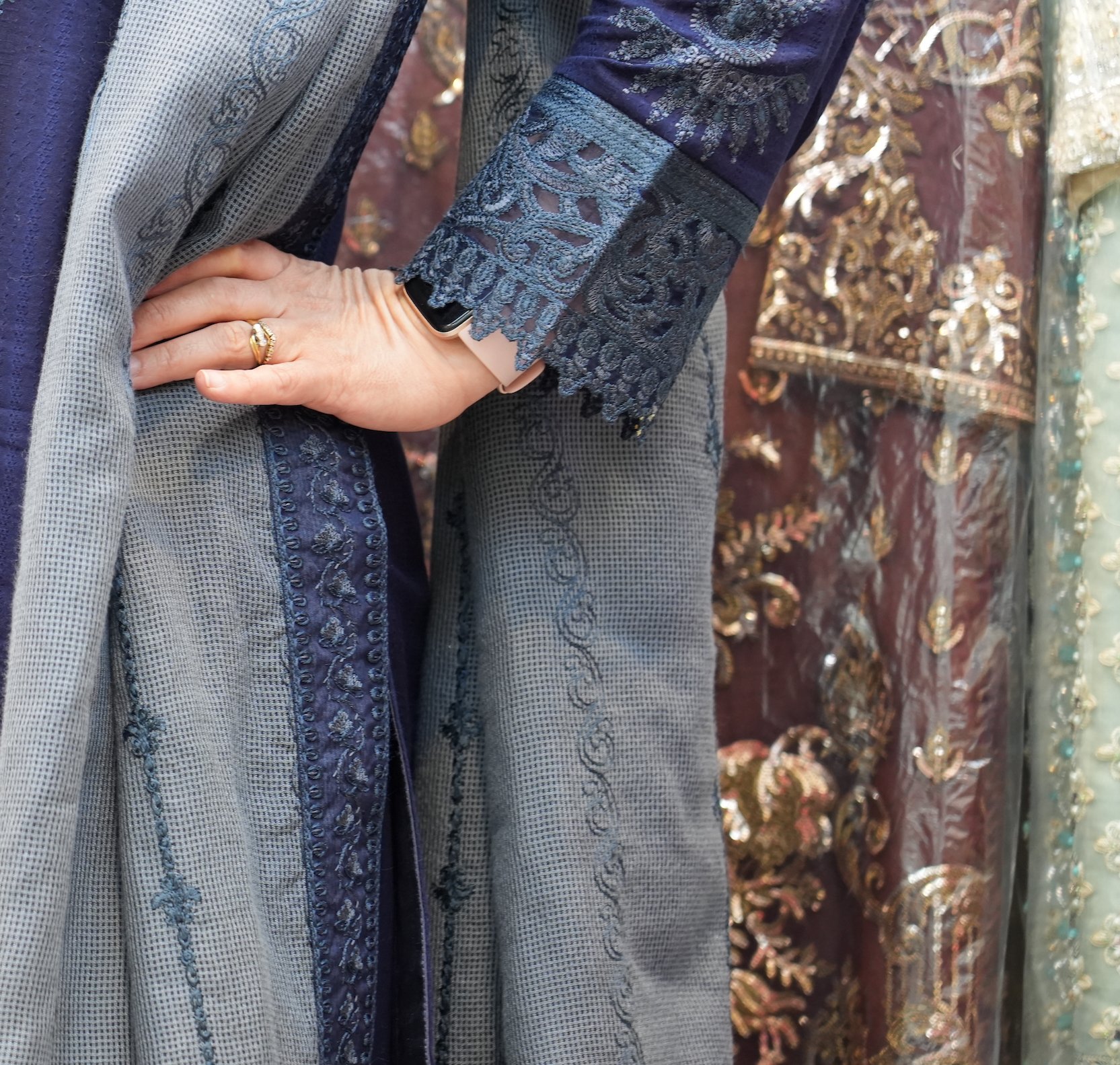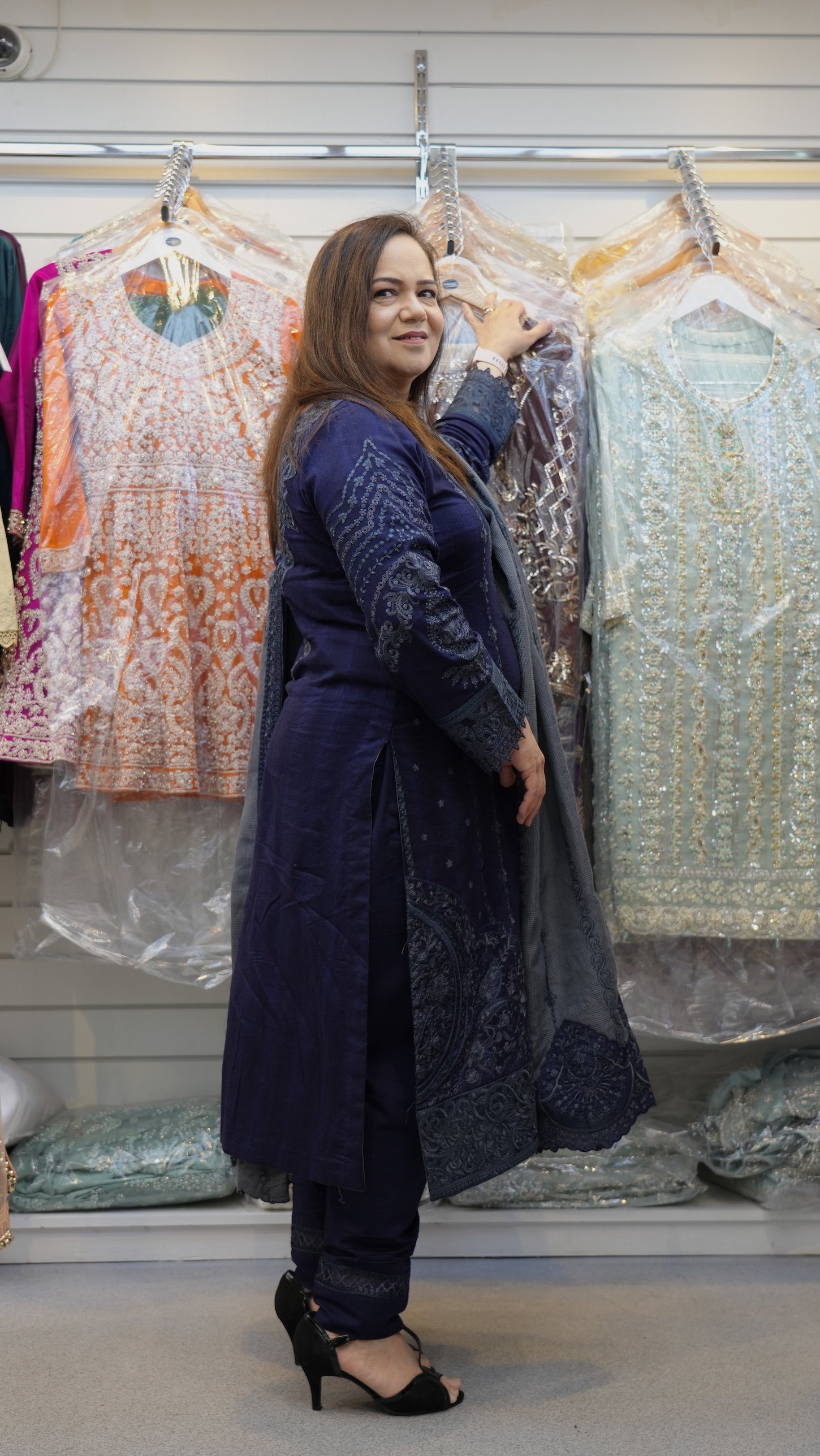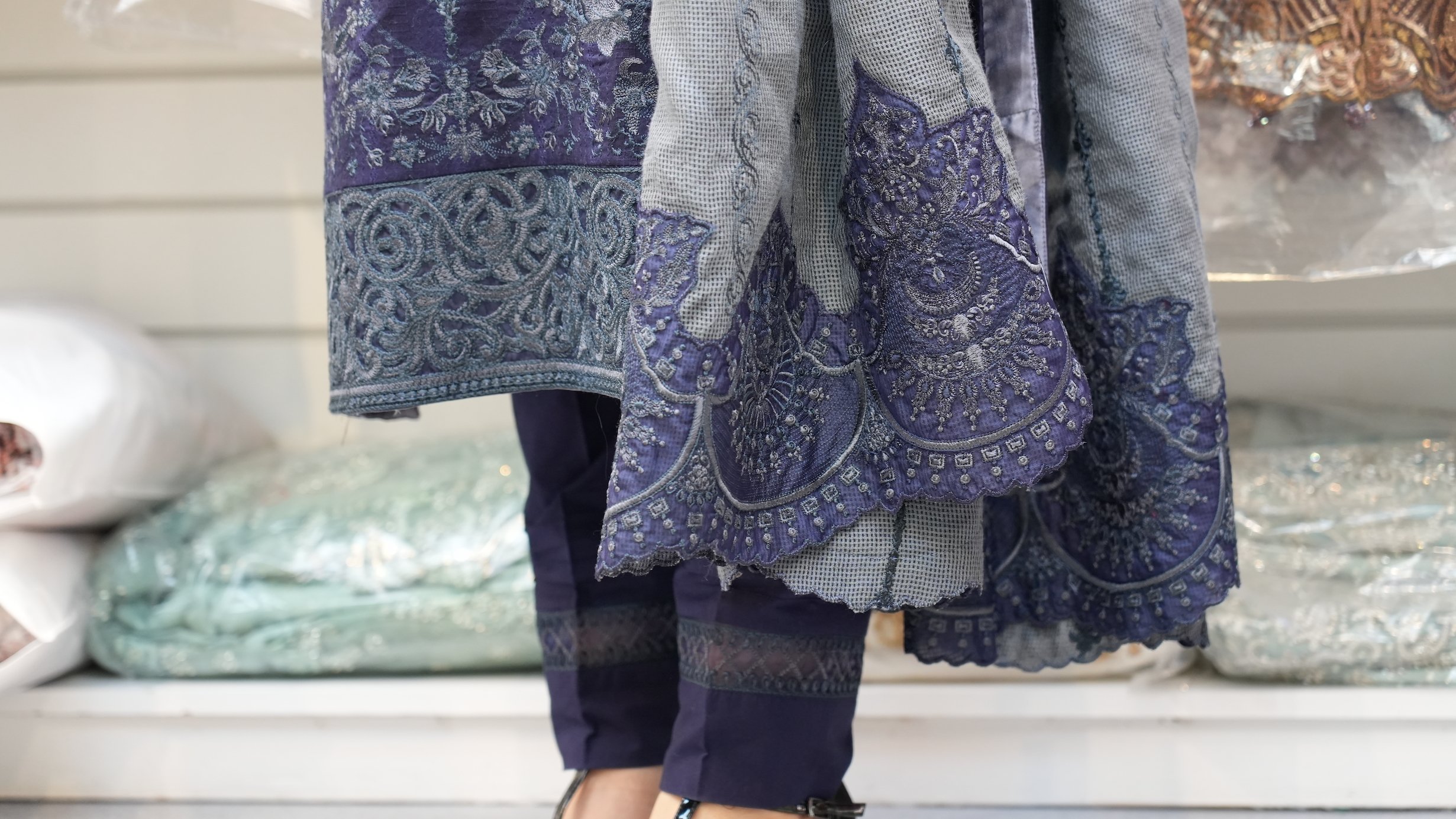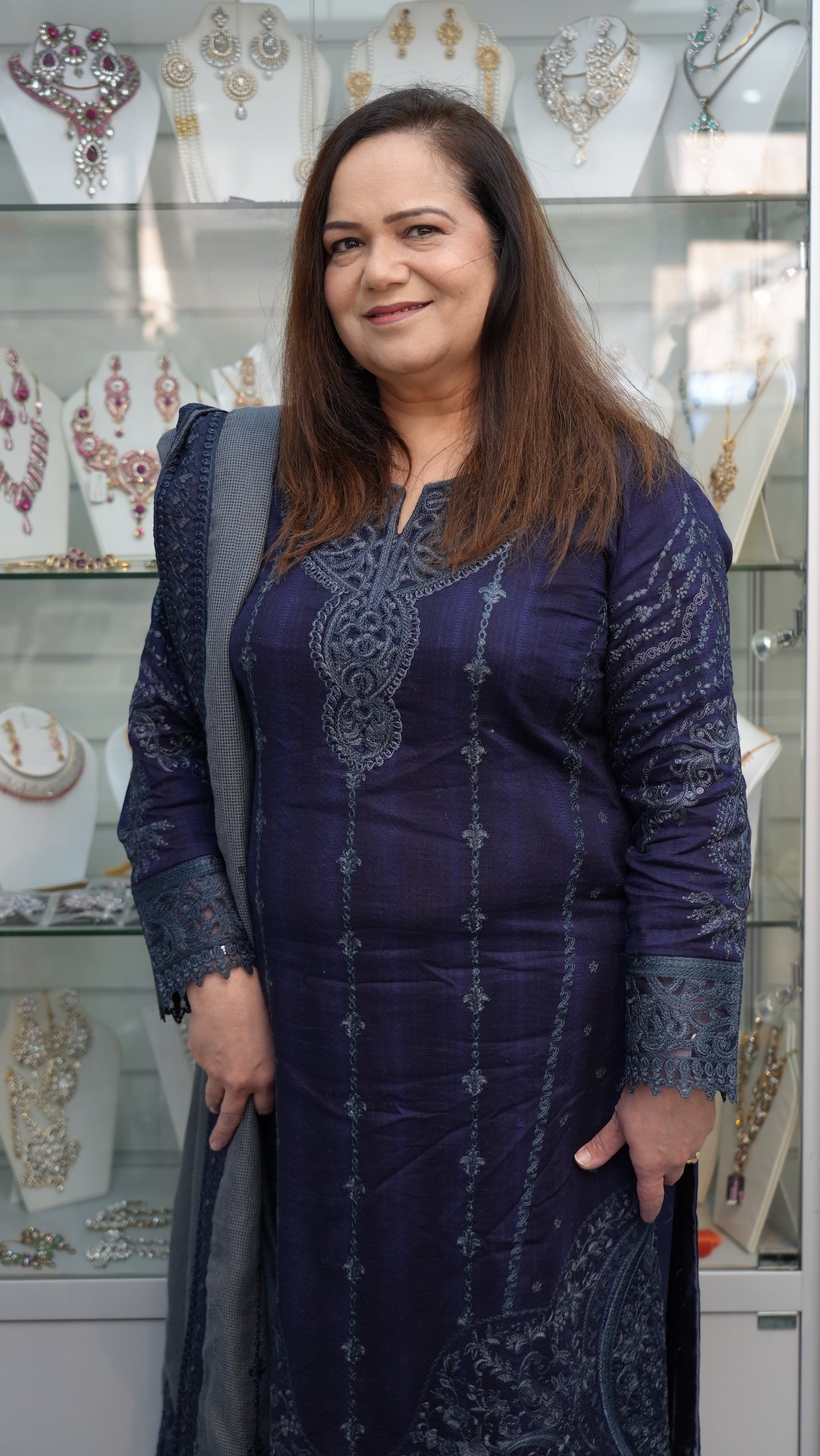Style Icon: Khadeja Imtiaz
In our latest issue, our style icon segment featured Khadeja Imtiaz, owner of Al-Jannat, one of the largest South Asian clothing stores in the Southside
Words and Photos by Samar Jamal
Al Jannat (meaning Paradise in Arabic) is located on Allison Street and first opened its doors 26 years ago, and since then Khadeja has become well versed in the latest trends and has loyal customers who trust her to choose their outfits. We caught up with the owner, to hear more about her fashion style and how her business inspires her.
Hey Khadeja, thanks for inviting me to your shop to chat. Can you tell me a bit about what you’re wearing today?
So I am wearing what we call shalwar kameez. It’s part of the traditional clothing in Pakistani culture. I like to wear it because I am Pakistani. I bought it premade but did the alterations myself to my own size. And I’m wearing some jewellery too. I love to wear jewellery, I think it makes the outfits nice.
How do you decide what you’re going to wear each day? Well, it’s dependent on the season, whether it’s summer or winter.
It’s a different colour of clothes for each. Especially during summer, I wear something more colourful and sharp like yellow or white. But during winter it’s duller colours and a little bit thicker material. But also it just depends on my own feelings and my own mood.
You offer a stitching service at Al-Jannat, so you can buy any fabric and have it made into a design of your choice. Do you use that for yourself and make your own clothes?
Yeah, I’ve made my own dresses. I learned it all in Pakistan because I did my diploma in fashion design. I love different clothes so I thought I should go into this line of work. When we first opened the shop I would just buy the clothes and stitch them together myself because it was cheaper that way. Plus there’s a sense of satisfaction, and more perfection, when I make it myself. But now I don’t have so much time to stitch.
You have a shop full of ready-made clothes (pre-stitched, ready-to-wear shalwar kameez). What influence does that have on the clothes that you wear?
I think it’s the other way around - I influence what is in the shop because all the clothes here are my favourites. Because when I buy it for the shop, I think about whether I would buy it for myself. Otherwise, I won’t buy it.
What’s the future for Al-Jannat?
We’ve been here for 26 years and we are the oldest shop here that sells South Asian clothing. My oldest daughter has gone into this line of work too and she has a degree in fashion and technology. She’s doing a job now but maybe in the future, she will take over this place. Until then I will keep using my knowledge and personal style to help customers. Two weeks ago a customer came in and said ‘I need an outfit for a wedding but it’s up to you, anything you want, just make it’. I asked her if she wanted me to send her photos and she said ‘No, I totally trust you’. So I will keep doing that for now.
A Brief History and Timeline of South Asian Fashion
Anarkali انار کلی
A flowing dress that is ankle length made from cotton. Originating during the Mughal era in 1600. The name comes from the legendary Mughal woman, Anarkali, whose life was tragically taken.
Shalwar Kameez شلوار قمیض
A shalwar is a loose trouser, narrow at the ankle and has an elastic waistband. A kameez is a knee-length tunic, unstitched at the bottom. It is also worn by men but the Kameez has collars. It is one of the most popular day-to-day outfits worn in Pakistan and influences of the style can be traced back to the Middle East, Persia and Turkey.
Kurta کُرتا
An evolved and modernised version of the Kameez but shorter in length, collarless and popular in urban areas of the Indian Subcontinent. It’s worn as a casual outfit that is often paired with jeans.
Sherwani شروانی
A long kameez that goes below the knees and is decorated with sequins. Worn by men at their wedding or other celebratory occasions. Its origins are from the Mughal Empire which ruled much of the Indian subcontinent between the 16th and 19th centuries.
Lehenga Choli لہنگاچولی
The lehenga is a three-piece outfit made up of a long skirt (lengha), a top (choli) and a scarf. The entire outfit is decorated in sequins. Similarly to the Sherwani, it’s an extravagant outfit worn by brides and can also be traced back to the Mughal period.

